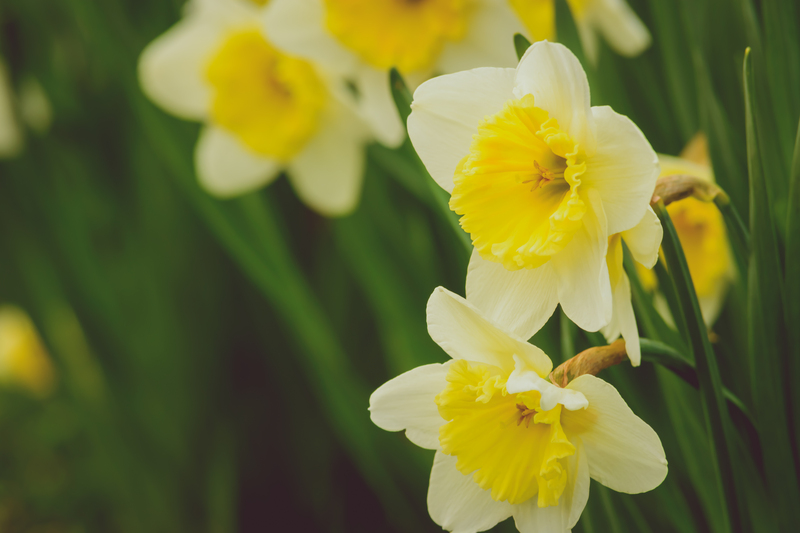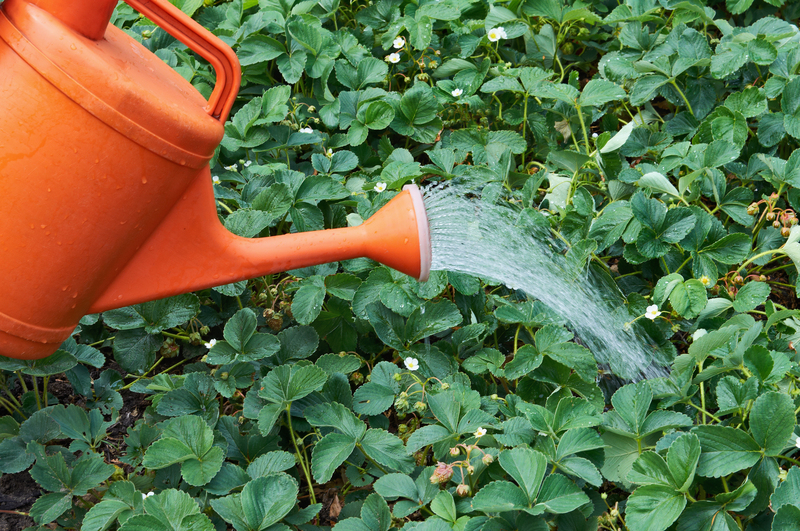Seasonal Shield: Prepare Your Plants for Winter's Harshness
Posted on 20/09/2025
Seasonal Shield: Prepare Your Plants for Winter's Harshness
As the golden hues of autumn fade and the first frosts begin to appear, gardeners everywhere start to ask the critical question: How can I protect my beloved plants from the unforgiving winter cold? The transition from warm days to chilly nights signals the moment to give your garden a seasonal shield--a comprehensive set of strategies to ensure your plants not only survive but thrive when spring returns. This in-depth guide will empower you with techniques and insider tips for winter plant protection, safeguarding everything from delicate perennials to hardy trees against the harshest winter conditions.
Why Winter Poses a Threat to Your Garden
Winter brings a host of challenges to both indoor and outdoor plants. The trio of low temperatures, frost, and fluctuating moisture levels can stress and even kill foliage, roots, and budding blossoms. Here are key ways winter endangers your plants:
- Frost Damage: Ice crystals rupture plant cells, causing discoloration and dieback.
- Desiccation: Cold, dry winds strip moisture, leaving leaves and stems parched and brittle.
- Soil Heaving: Freeze-thaw cycles can push roots upward, leading to exposure and root damage.
- Pest and Disease Vulnerability: Dormant plants are less resilient to attacks and infections during cold months.
- Reduced Sunlight: Shorter days and weaker light restrict photosynthesis, slowing growth and vitality.

Essential Steps to Prepare Your Plants for Winter's Harshness
By adopting proven plant protection techniques for winter and understanding your region's climate, you can create resilient landscapes that weather the frost with ease. Winter-busting preparations start long before the first snowflake falls.
1. Know Your Hardiness Zone
Success starts with knowledge. The USDA Plant Hardiness Zone Map (and equivalent charts worldwide) helps gardeners match plant species to their local minimum temperatures. Choose species that are suited--or at least adaptable--to your zone for maximum winter resilience.
2. Clean Up Debris but Leave Some Cover
- Remove spent annuals, diseased leaves, and fallen fruit to avoid overwintering pests and fungi.
- Leave perennial stems and some mulch as natural protection for beneficial insects and for insulation.
- Keep a layer of leaf litter or evergreen boughs over garden beds, especially for tender perennials.
3. Mulching--The Ultimate Winter Blanket
Mulching is one of the most effective ways to shield your roots from winter's extremes. The right mulch regulates soil temperature, prevents heaving, and retains moisture.
- Organic mulches (like shredded bark, compost, or straw) decompose and enrich the soil.
- Apply mulch 2-4 inches deep around the base of plants, but keep it a few inches away from trunks and stems to avoid rot.
- Avoid heavy piling on top of soft crowns--spread mulch evenly for balanced protection.
4. Hydration: The Last Deep Watering
Plants need adequate moisture to withstand cold, dry air. Before the ground freezes, give your garden a deep soak.
- Water deeply so roots can absorb as much as possible; pay extra attention to evergreens and new plantings.
- After watering, apply mulch to keep the moisture locked in.
- Too much water right before a freeze can cause root rot, so monitor precipitation and drainage carefully.
5. Protecting Tender and Young Plants
Certain species (like roses, hydrangeas, or newly planted trees) are especially vulnerable. Use these targeted tactics to shield your most delicate treasures:
- Frost cloths, burlap wraps, and garden blankets act as barriers against windburn and cold snaps.
- Create DIY windbreaks with stakes and hessian, or use evergreen branches as a buffer.
- Cluster potted plants together in a sheltered corner for shared warmth and easier covering.
- For young trees, wrap trunks with tree guards or spiral wraps to fend off sunscald and animal nibbling.
Winter Plant Protection for Different Garden Types
For Perennial Flower Beds
- Cut back faded stems, leaving 2-3 inches above ground, to discourage pests but provide some insulation.
- Apply an extra layer of compost or mulch after the ground is cool but not yet frozen.
- Certain perennials (e.g., salvia or penstemon) benefit from a light airy mulch like pine needles.
For Vegetable Gardens
- Harvest remaining crops and compost plant residue untainted by disease.
- Create cold frames or hoop houses with row covers to extend the season for cold-tolerant veggies like kale or spinach.
- Consider cover crops (like winter rye) to shield the soil and replenish nutrients.
For Container Plants and Houseplants
- Move pots indoors, to a garage, or near house walls for thermal protection.
- If moving isn't possible, wrap pots in bubble wrap or burlap and group for insulation.
- Reduce watering during winter dormancy, but check periodically to avoid bone-dry soil.
For Trees and Shrubs
- Mulch the root zone widely but shallowly; avoid bark contact with the trunk.
- Whitewash young fruit or thin-barked trees with diluted latex paint to prevent sunscald.
- Secure loose or upright branches with soft ties to prevent breakage from ice or snow loads.
Winterization: Advanced Tactics for Seasonal Plant Defense
Take your winter gardening game to the next level with these pro-level methods:
- Anti-desiccant sprays: Apply to broadleaf evergreens to reduce water loss through leaf surfaces.
- Double-layered protection: For precious specimens, combine mulch, windbreaks, and individual plant covers.
- Snow as insulation: Fresh snow acts as a natural, insulating blanket. Don't hasten to remove snow unless it's heavy enough to crack branches.
- Heated cables or mats: Useful for extremely sensitive beds or greenhouses, providing a gentle warmth.
Common Mistakes to Avoid When Shielding Plants for Winter
Avoid the pitfalls that can undo your hard work.
- Overwatering: Soaked soil suffocates roots, especially as drainage slows in cold weather.
- Late Fertilization: High-nitrogen feeds stimulate tender growth, susceptible to frost damage.
- Improper Covering: Cover materials that trap moisture may cause rot; use breathable fabrics instead.
- Neglecting Pests: Winter doesn't kill all insects--overwintering grubs and eggs can attack in spring without fall cleanup.
Extra Tips for a Resilient Spring Comeback
- Label your plants before layers of snow hide them, especially new additions, so you know where to look for signs of spring regrowth.
- Prune wisely: Remove damaged or diseased branches, but postpone major pruning until late winter or early spring to avoid fresh wounds freezing.
- Watch for thaws: If a winter warm-up is forecast, temporarily vent cold frames or covers to avoid overheating.
- Feed the soil with compost in late fall for a nutrient boost once the ground warms.
- Keep a garden journal to track what protections worked best, and refine your winter plant shield strategies for next year.

Frequently Asked Questions about Winterizing Your Plants
Should I prune before or after winter?
It depends on the plant. Remove diseased or broken branches in late fall, but hold off on heavy pruning until the dormant season is almost over to prevent dieback.
Is it okay to use plastic covers?
*Plastic tarps can trap moisture, risking mold and rot. Use breathable materials like burlap or horticultural fleece--especially for extended protection.*
What about houseplants?
Winter's low light and dry air indoors can be as tough as outdoor frost! Move houseplants away from cold drafts and hot vents, water less frequently, and clean leaves to maximize available light.
Conclusion: Granting Your Plants a Seasonal Shield
As temperatures drop, your garden's survival depends on proactive care and strategic shielding. By mastering mulch, harnessing the power of windbreaks, and understanding the specific needs of each plant, you'll craft a seasonal shield that not only guards against winter's harshness but sets the stage for a lush, vibrant spring. Don't let winter catch you off guard--equip your garden for the cold, and watch it bloom with renewed vigor once the cold retreats.
For more winter plant protection tips, instructional videos, and region-specific guidance, subscribe to our newsletter or join our gardening community. Your plants will thank you with healthy, hearty growth next year!

